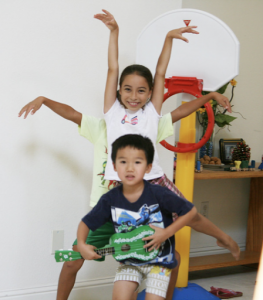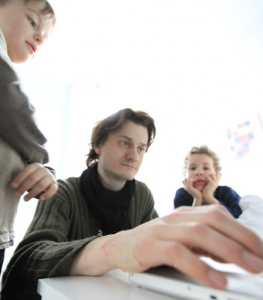10
Erin Kennedy
Overall, this chapter is rather weak…The theory section needs to be strengthened. This chapter also needs a stronger connection to college students…Is this topic covered better in another chapter?
Introduction
COVID-19 has completely disrupted the education system and learning process by causing school closures, and, because of this, teachers have needed to adapt their teaching methods. Young children, especially, have been most affected as they are more likely to experience negative long term effects from these school closures. The COVID-19 pandemic has caused schools all over the world to turn to a virtual teaching format, which negatively impacts students academically, as students are disengaged with the material due to feelings of isolation. They are easily distracted in their homes, and do not know how to use, or do not have access to new technology needed for online learning.
Connection to STS Theory

The isolation aspect of the pandemic has caused a negative impact on the learning process of students, as they tend to feel more disengaged from the content material presented in online learning. By not attending school, students are not able to see their friends and are feeling more isolated than ever. This draws a relation to STS, as these youth are forced to virtually engage with their peers, which causes them to feel aspects depression and loneliness. As stated in “Student Mental Health in the Midst of the COVID-19 Pandemic: A Call for Further Research and Immediate Solutions,” “among the many student surveys administered worldwide, one survey by YoungMinds reported that 83% of young respondents agreed that the pandemic worsened pre-existing mental health conditions, mainly due to school closures, loss of routine, and restricted social connections (YoungMinds, 2020)” (Grubic and Badovinac, 2020). College students especially have been affected by remote learning, as they are used to physically interacting with their friends. The remote learning that is being implemented into universities has heightened the risk of suicide and depression in college students. Later stated in the same article, “Based on insights from research examining the impact of academic disruptions on students (Wickens, 2011), it is reasonable to venture that students may experience reduced motivation toward studies, increased pressures to learn independently, abandonment of daily routines, and potentially higher rates of dropout as direct consequences of these measures” (Grubic and Badovinac, 2020). Young students are also experiencing feelings of isolation as they have short attention spans, so it is hard to sit at a computer all day and not physically engage with the material or their friends. As stated in the article, “School is Digital, Kids Are Overwhelmed. How Do You Manage Screen Time in the COVID Era?”, “…Lim is also the mother of two FACTS students, and while her 9-year-old manages virtual school well, her first grader can get overwhelmed. ‘My 6-year-old just has had a more difficult time,’ said Lim. ‘After two hours, she is done, and she comes to me for hugs and encouragement’ (Graham, 2020). This also finds connection to STS in the way that young students are normally used to physically engaging with the material instead of sitting down at a computer screen. This causes students to not pay attention to the online teaching, as they are tired and bored. This lack of focusing can set them back in their educational goals. School is one of the largest contributors to young children’s first social experiences. In “Online Learning amid the COVID-19 Pandemic: Students’ Perspectives” it is stated that, “Educational institutions are also the focal points of social activities and interactions. If educational activities are suspended, many children and young people will miss social interaction based activities that are necessary for growth and learning” (Adnan, 2020). Isolation keeps children away from social interactions, possibly impacted their growth and learning that is essential in their younger years. Overall, COVID-19 has entirely disrupted the learning process for young students as they are disengaged with the material due to feelings of isolation from their peers.
Voices of Clemson Undergraduate Students
“When I am in my dorm room, I have the ability to turn off my camera and try to accomplish other tasks such as cleaning or doing homework for other classes, which leads me to fall behind in the class I was supposed to be paying attention in.”
Distractions

The online learning platforms that are being implemented into schools also negatively affect students, as they are so easily distracted in their homes by outside factors such as toys and their siblings. Students are more likely to try and multitask from their homes than they would in school because they are not in a physical classroom. As stated in “Distractions: an Obstacle to Online Education,” “In the comfort of home, cafeteria or library, online students are more likely to send text messages, answer emails, chat on Facebook or WhatsApp, watch videos on YouTube, surf on Google, play video games or listen to music while taking an online course, compared to a teacher-supervised class” (Guijosa, 2019).
In many cases of online learning conducted through virtual meeting rooms, students have the option to turn their computer or device’s camera off and remain unseen during class. This draws connections STS because with online learning and the ability to “turn off your camera,” students are not held as accountable for their actions as they would be in schools for tending to other tasks. With asynchronous class as well, students tend to pay less attention to the material and instead enjoy social life with their friends and try to catch up later. These distractions can impact college students heavily as they allow for them to fall behind and/or retain the material worse. Young children are also easily distracted by toys, games, siblings, etc., which causes them to not pay attention to the learning material. As stated in “Educators Look for Ways to Help Students Disengaged from Distance Learning,” “Nearly a third of her [Principal Tayarisha Batchelor] students at Rawson Elementary School in Hartford, Connecticut, have been unplugged from distance learning. On a Friday afternoon, as she visited some of their homes, she saw many of the reasons why: Internet service is unreliable. Parents are away at work. Some are uncomfortable with the technology. Still others think their children are doing fine when they are actually using the devices for other things” (Melia, 2020). By not being in a physical classroom, students are more easily distracted by toys and would much rather have fun than complete their homework, which will negatively impact their learning both now and in the future.
Lack of Knowledge or Accessibility
Finally, the educational process has been disrupted for students because some students do not know how to use the technology required for schooling, while some others do not even have access to the technology required. COVID-19 has impacted education and the learning process for all students, especially those in poorer geographical areas. Access to technology is critical now more than ever for students to be able to work towards their educational goals. Students in poorer geographical areas do not have access to this technology, which puts them at a disadvantage for college admissions, jobs, etc. in the future. When discussing a survey conducted in the “Impact of lockdown on learning status of undergraduate and postgraduate students during COVID-19 pandemic in West Bengal, India,” “A total of 232 students provided complete information regarding the survey. The simple percentage distribution was used to assess the learning status of the study participants. During the lockdown period, around 70% of learners were involved in e-learning. Most of the learners were used android mobile for attending e-learning. Students have been facing various problems related to depression anxiety, poor internet connectivity, and unfavorable study environment at home. Students from remote areas and marginalized sections mainly face enormous challenges for the study during this pandemic” (Kapasia, 2019). Those in poorer geographical areas are put at a disadvantage with online learning as they do not have access to the technology required for schooling. This will not only impact them now, but it will also impact them in the future as they will be behind in achieving their educational goals. Similarly, “Policy Brief: Education during COVID-19 and beyond” also discuss the drastic effects school closures will have on poor students by stating, “The crisis is exacerbating pre-existing education disparities by reducing the opportunities for many of the most vulnerable children, youth, and adults – those living in poor or rural areas, girls, refugees, persons with disabilities and forcibly displaced persons – to continue their learning. Learning losses also threaten to extend beyond this generation and erase decades of progress, not least in support of girls and young women’s educational access and retention” (Policy Brief, 2020). The transition to online learning increases the gap between the wealthy and poor in society as those not able to access e-learning will be behind in reaching their goals for many generations to come. Another major affect school closures will have on children is that they do not know how to work the technology needed, so parents have to help them with it, which often takes longer and further hinders their learning. As stated in “The Impact of COVID-19 on Education,” “But the bigger point is this: there will likely be substantial disparities

between families in the extent to which they can help their children learn. Key differences include (Oreopoulos et al. 2006) the amount of time available to devote to teaching, the non-cognitive skills of the parents, resources (for example, not everyone will have the kit to access the best online material), and also the amount of knowledge – it’s hard to help your child learn something that you may not understand yourself” (The Impact of Covid-19 on Education, 2020). This lack of knowledge could have been prevented if schools had previously implemented technology into the learning process, so students would have been prepared for instances such as the pandemic. Some schools did implement this prior knowledge and they saw many benefits as described in the “Effectiveness of Science-Technology-Society (STS) Instruction on Student Understanding of the Nature of Science and Attitudes toward Science.” For example, “STS [was] increasingly implemented in K-12 science education programs around the world because its impact on preparing lifelong learners who can participate effectively on technologically orientated economy” (Akcay, 2015). The students with this prior knowledge were better able to adjust to online learning, which enabled them to continue their education and learning with little to no interruptions. This lack of knowledge of technology and lack of access to it further hinder students from achieving their educational goals.
Conclusion
COVID-19 has impacted not only current teaching methods, but will continue to impact learning for years to come. Although many will say that a virtual teaching format has provided some positives to education, in the sense that students are better able keep up with school work when they are sick or are on vacation with family since they can access the learning material from anywhere with their computer, the negatives far outweigh the positives. The education of young children has been negatively impacted the most by the virtual teaching format causing them to learn less than they would be if they were physically in a classroom. On the other hand, the education of college age students has been impacted since students are very distracted during online class and worried about the quality of the education they are paying so much for. The pandemic has set students back in their educational progress and caused gaps in knowledge that will continue to impact them for the rest of their education.
References
Adnan, M., & Anwar, K. (2019, November 30). Online Learning amid the COVID-19 Pandemic: Students’ Perspectives. ERIC. https://eric.ed.gov/?id=ED606496.
Akcay, B., & Akcay, H. (2015). Effectiveness of Science-Technology-Society (STS) Instruction on Student
Understanding of the Nature of Science and Attitudes toward Science. International Journal of Education in Mathematics, Science and Technology, 3(1), 37–45. https://files.eric.ed.gov/fulltext/EJ1059047.pdf
Graham, K. (2020, Oct. 23). School is digital, kids are overwhelmed. How do you manage screen time in the COVID era? The Philadelphia Inquirer. https://www.inquirer.com/education/coronavirus-remote-learning-screen-time-students-20201020.html
Guijosa, C. (2019, Feb. 26). Distractions: An obstacle to online education. Observatory of Educational
Innovation. https://observatory.tec.mx/edu-news/distraction-an-obstacle-to-online-education
Kapasia, N., Paul, P., Roy, A., Saha, J., Zaveri, A., Mallick, R., Barman, B., Das, P., & Chouhan, P. (2020). Impact of lockdown on learning status of undergraduate and postgraduate students during COVID-19 pandemic in West Bengal, India. Children and youth services review, 116, 105194. https://doi.org/10.1016/j.childyouth.2020.105194
Melia, M. (2020, June 15). Educators look for ways to help students disengaged from distance learning. PBS News Hour. https://www.pbs.org/newshour/education/educators-look-for-ways-to-help-students-disengaged-from-distance-learning
Grubic, N. (n.d.). Student mental health in the midst of the COVID-19 pandemic: A call for further research and immediate solutions – Nicholas Grubic, Shaylea Badovinac, Amer M Johri, 2020. International Journal of Social Psychiatry, 66(5): 517-518. https://journals.sagepub.com/doi/10.1177/0020764020925108?url_ver=Z39.88-2003
The United Nations. (2020, Aug.) Policy Brief: Education during COVID-19 and beyond. https://www.un.org/development/desa/dspd/wp-content/uploads/sites/22/2020/08/sg_policy_brief_covid-19_and_education_august_2020.pdf
Sievertsen, H., & Burgess, S. (2020, April 1)The impact of COVID-19 on education. VOX EU . https://voxeu.org/article/impact-covid-19-education
Images
Image 1: “bored kid” by Creative Carol is licensed under CC BY-NC-SA 2.0
Image 2: “Kids Playing” by AiyaHMPH is licensed under CC BY-NC-ND 2.0
Image 3: “Kids love computers” by demoshelsinki is licensed under CC BY 2.0
